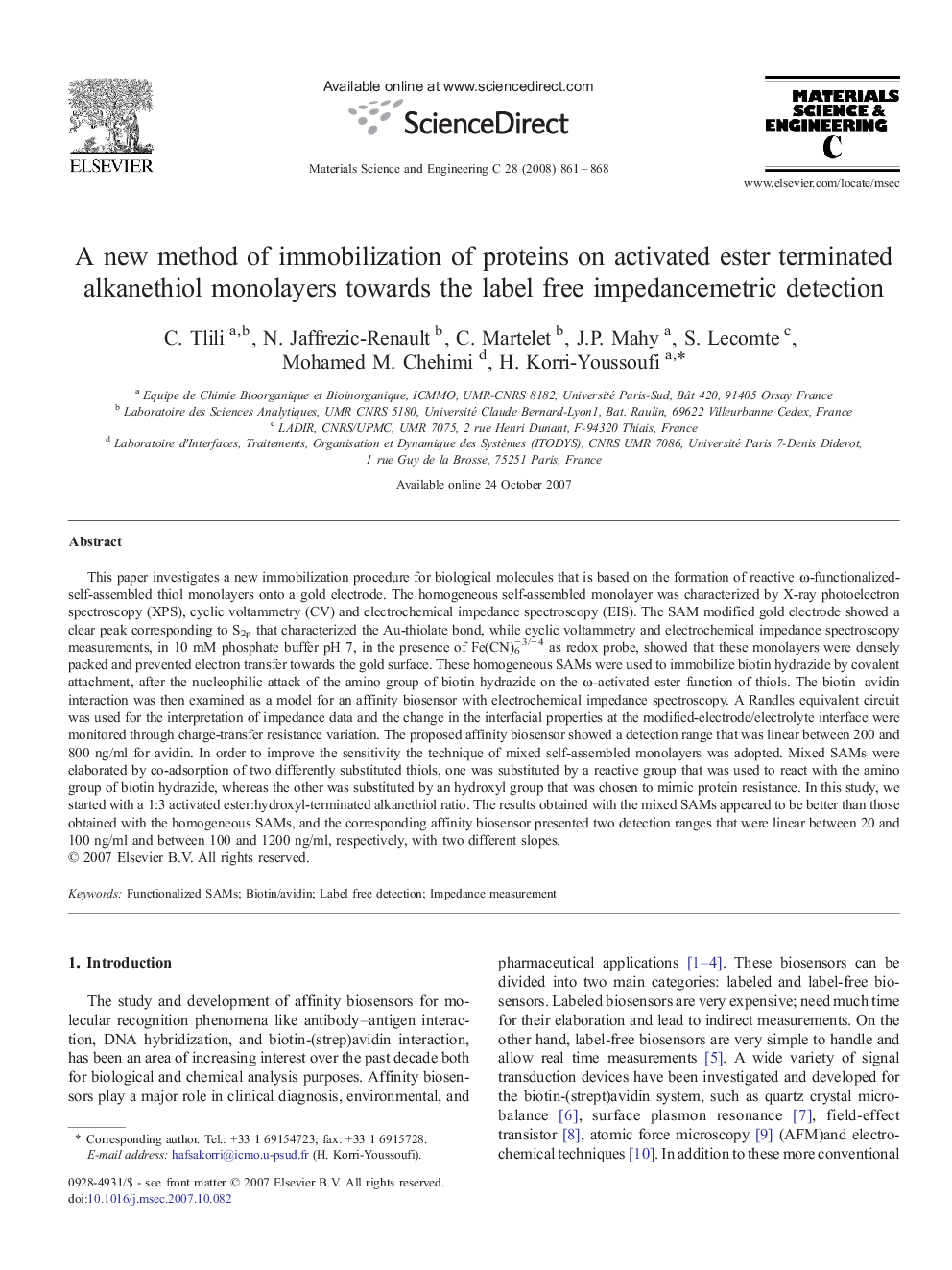| کد مقاله | کد نشریه | سال انتشار | مقاله انگلیسی | نسخه تمام متن |
|---|---|---|---|---|
| 1431099 | 1509189 | 2008 | 8 صفحه PDF | دانلود رایگان |

This paper investigates a new immobilization procedure for biological molecules that is based on the formation of reactive ω-functionalized-self-assembled thiol monolayers onto a gold electrode. The homogeneous self-assembled monolayer was characterized by X-ray photoelectron spectroscopy (XPS), cyclic voltammetry (CV) and electrochemical impedance spectroscopy (EIS). The SAM modified gold electrode showed a clear peak corresponding to S2p that characterized the Au-thiolate bond, while cyclic voltammetry and electrochemical impedance spectroscopy measurements, in 10 mM phosphate buffer pH 7, in the presence of Fe(CN)6− 3/− 4 as redox probe, showed that these monolayers were densely packed and prevented electron transfer towards the gold surface. These homogeneous SAMs were used to immobilize biotin hydrazide by covalent attachment, after the nucleophilic attack of the amino group of biotin hydrazide on the ω-activated ester function of thiols. The biotin–avidin interaction was then examined as a model for an affinity biosensor with electrochemical impedance spectroscopy. A Randles equivalent circuit was used for the interpretation of impedance data and the change in the interfacial properties at the modified-electrode/electrolyte interface were monitored through charge-transfer resistance variation. The proposed affinity biosensor showed a detection range that was linear between 200 and 800 ng/ml for avidin. In order to improve the sensitivity the technique of mixed self-assembled monolayers was adopted. Mixed SAMs were elaborated by co-adsorption of two differently substituted thiols, one was substituted by a reactive group that was used to react with the amino group of biotin hydrazide, whereas the other was substituted by an hydroxyl group that was chosen to mimic protein resistance. In this study, we started with a 1:3 activated ester:hydroxyl-terminated alkanethiol ratio. The results obtained with the mixed SAMs appeared to be better than those obtained with the homogeneous SAMs, and the corresponding affinity biosensor presented two detection ranges that were linear between 20 and 100 ng/ml and between 100 and 1200 ng/ml, respectively, with two different slopes.
Journal: Materials Science and Engineering: C - Volume 28, Issues 5–6, 1 July 2008, Pages 861–868